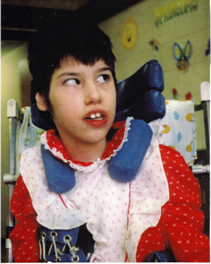Act Now

Empower U: Learn to Access Your Disability Rights Training on Canadian Human Rights, the Convention on the Rights of Persons with Disabilities (CRPD) and its Optional Protocol (OP) training aims to increase awareness of how to address discrimination using more familiar Canadian human rights laws such as Human Rights Codes and the newer international Convention on the Rights of Persons with Disabilities (CRPD). This is training for persons with disabilities by persons with disabilities. The training is part of a project funded by Employment and Social Development Canada and implemented by the Council of Canadians with Disabilities (CCD) in collaboration with Canadian Multicultural Disability Centre Inc. (CMDCI), Citizens With Disabilities – Ontario (CWDO), Manitoba League of Persons with Disabilities (MLPD) and National Educational Association of Disabled Students (NEADS). Read more.
Sign Up for our monthly digest
A monthly newsletter from CCD about what is happening in the community
The Latimer Case: The Reflections of People with Disabilities - Introduction
Related Documents
October 24, 2018
CCD to Launch Tracy Latimer Archives and Facebook Page
June 4, 2008
Tracy Latimer, the Victim; Robert Latimer, the Murderer
February 16, 2007
An Open Letter to Prime Minister Harper
by Hugh R. Scher, Chairperson, CCD Human Rights Committee
When the community of persons with disabilities first heard about how Robert Latimer killed his daughter Tracy, a little girl with Cerebral Palsy, we never imagined that this case would become one of the foremost issues on our agenda. We assumed that this case would be handled in a manner similar to other murder cases. We did not think that the fact that Tracy had a disability would skew almost every response to this case. Unfortunately, we misjudged the impact that disability has on a case like this.
We were appalled when we heard our friends and neighbors express sympathy for Robert Latimer and suggest that he had done the right thing. The public outpouring of support for Robert Latimer that we witnessed in the Canadian media jolted us into action. We realized that the Council of Canadians with Disabilities has a fundamental role to play in this case. As a national equality rights organization of people with disabilities, we decided it was our place to speak out wherever possible to explain to Canadians why disability must never be used as a reason to diminish the protection afforded to all citizens by the Canadian legal system.
CCD's Human Rights Committee launched a number of activities to ensure that the perspective of Canadians with disabilities is central to any important decision making that is done in the Latimer case: CCD intervened in Latimer's first appeal to the Saskatchewan Court of Appeal and is seeking to intervene in his second appeal; CCD began to publish the CCD Latimer Watch, a newsletter, to inform and influence public opinion on the case; CCD volunteers have become recognized media spokespersons on the case and have made themselves available to the media for commentary whenever necessary.
The Latimer case has caused many individuals with disabilities to realize that much work remains to be done to secure fundamental human rights protection for people with disabilities. Cases like the Latimer case show us that the very lives of people with disabilities, particularly people with very severe disabilities, are in jeopardy. The correspondence that has been received by CCD demonstrates that many people at the grassroots level want to join the fight to protect the fundamental human rights of people with disabilities. To assist more people participate in this work CCD has developed this publication which individuals can use as a backgrounder when preparing presentations on the Latimer case. CCD's motto is A VOICE OF OUR OWN. The intention of the publication is to help us exercise that voice.
I encourage everyone who reads this publication to make at least one presentation, either formal or informal, on the Latimer case. This can be to a church group, a university class, a youth club, or even to an outspoken neighbor who has taken a pro-Robert Latimer stance. The purpose of this work is to change the minds of Canadians. We want to alter those perceptions that lead people to weigh the severity of a child's disability in their judgment of whether and how to judge the actions of her murderer. This involves altering people's deepest held beliefs about disability and how it affects our quality of life.
Admittedly, this is a mammoth task. However, by working at the local community level on this issue we can make a difference in how Canadians perceive people with disabilities and thus help to ensure greater respect for the fundamental human rights of persons with disabilities.
Back to Table of Contents
Forward to next section.

Tracy Latimer
The Latimer Case
The Latimer case directly concerned the rights of persons with disabilities. Mr. Latimer's view was that a parent has the right to kill a child with a disability if that parent decides the child's quality of life no longer warrants its continuation. CCD explained to the court and to the public how that view threatens the lives of people with disabilities and is deeply offensive to fundamental constitutional values. Learn more.
